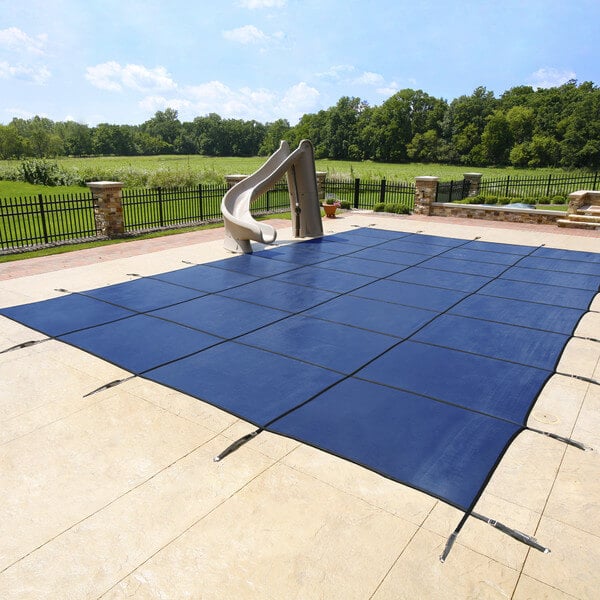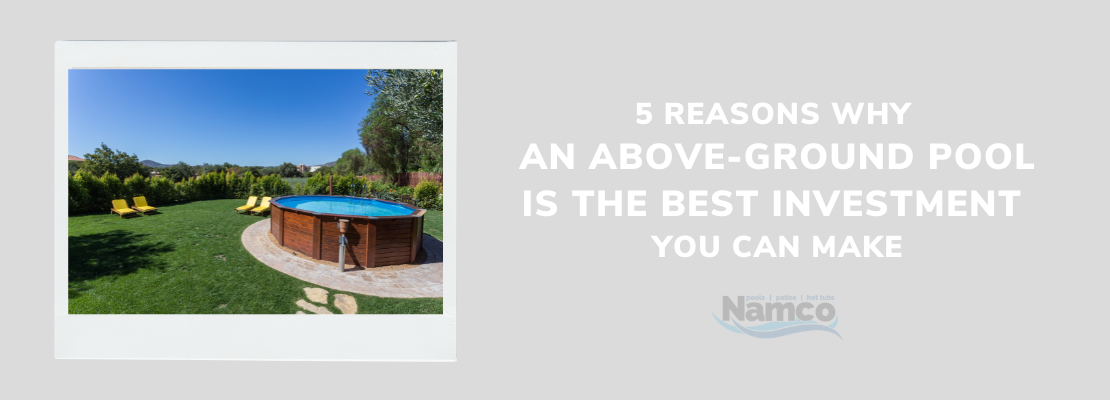Discover the extraordinary power of salt chlorine generators in transforming your pool into a pristine oasis. This comprehensive article delves into the intricate workings of these generators, revealing their remarkable ability to sanitize and purify pool water. Uncover the secrets of cost-effectiveness, maintenance tips, and optimal salt concentration levels for unparalleled performance. Gain valuable insights into installation considerations and potential costs, empowering you to make informed decisions. Prepare to be captivated by the world of salt chlorine generators and unlock the true potential of your pool.
Key Takeaways
- Salt chlorine generators use salt and electrolysis to sanitize pool water, converting it into chlorine through electrolysis.
- Maintaining the right salt levels between 2,700 and 3,400 ppm is crucial for optimal performance and chlorine production.
- Regular maintenance, including cleaning the generator unit and monitoring calcium levels, is necessary to prevent build-up and damage.
- Salt chlorine generators typically last between 3 to 10 years, but their lifespan can be affected by various factors, and proper care can help extend it.
Inner Workings of Salt Chlorine Generators
Understanding the inner workings of salt chlorine generators is essential for pool owners who want to effectively sanitize their pool water. These generators utilize a salt chlorination process to produce chlorine for pool sanitation. Sodium chloride, commonly known as salt, is added to the pool water, and when the water passes through the generator, it undergoes electrolysis. This electrolysis process converts the salt into hydrochloric acid and sodium hypochlorite, which are effective in cleaning and sanitizing the pool.
The salt cell, an integral component of the generator, plays a crucial role in converting salt into chlorine through the process of electrolysis. It consists of flat plates made from ruthenium and iridium, which facilitate the chemical reaction. The control board, on the other hand, provides electricity to the generator and enables the regulation of chlorine levels. It also has the capability to be connected to devices for remote control, allowing for convenient monitoring and adjustment of chlorine levels.
To ensure optimal performance, pool owners must maintain salt levels between 2,700 and 3,400 ppm. Regular cleaning of the chlorine generator unit is necessary to prevent the build-up of debris and other substances that can affect its efficiency. Additionally, monitoring calcium levels is crucial to prevent clogging and damage to the generator. During electrical storms, it is important to turn off the power to protect the system from potential damage.
As we delve into the cost-effectiveness of salt chlorine generators, it becomes evident that understanding the inner workings of these generators is fundamental in maximizing their benefits and maintaining a clean and safe pool environment.
Cost-Effectiveness of Salt Chlorine Generators
The cost-effectiveness of salt chlorine generators depends on various factors, including the upfront cost, ongoing maintenance expenses, and potential savings in chemical usage. When considering the cost of a salt chlorine generator, it is important to factor in the initial investment. Salt chlorine generators can cost between $500 and $1200, depending on the brand, model, and market. While this initial cost may be higher than traditional chlorine pools, the ongoing maintenance costs for saltwater pools are relatively inexpensive.
One of the potential cost-saving benefits of salt chlorine generators is the reduction in chemical usage. Traditional chlorine pools require the regular addition of chlorine tablets or liquid chlorine to maintain proper sanitization levels. With a salt chlorine generator, the pool water is sanitized through the production of chlorine from salt and electrolysis. This eliminates the need for regular chemical additions, resulting in potential savings in chemical costs over time.
Additionally, the cost of salt as a commodity is generally low, making it a cost-effective option for maintaining the salt levels in the pool. Salt is added to the pool water and converted into chlorine as the water passes through the generator. The salt concentration needs to be maintained between 2,700 and 3,400 ppm for optimal performance. Regular testing and adjustments may be necessary, but the cost of salt is typically minimal compared to other chemical additives.
Maintenance Tips for Salt Chlorine Generators
Regular maintenance is essential for ensuring the optimal performance and longevity of salt chlorine generators. One crucial aspect of maintenance is salt cell maintenance. The salt cell is responsible for converting salt into chlorine through electrolysis. To keep the salt cell functioning properly, it is important to clean it regularly. This involves removing any scale or debris that may have accumulated on the cell plates.
To clean the salt cell, first, turn off the power to the generator. Then, remove the cell from the unit and inspect it for any visible deposits or scaling. If there are any deposits, soak the cell in a solution of diluted acid, such as muriatic acid, to dissolve the scale. Gently scrub the cell plates with a soft brush to remove any remaining residue. Rinse the cell thoroughly with water before reinstalling it.
In addition to regular cleaning, it is important to monitor the salt levels in the pool. Maintaining the right salt concentration is crucial for the effectiveness and safety of the pool. If the salt levels are too low, the chlorine production will be insufficient, leading to less sanitary swimming conditions. On the other hand, high salt levels can cause premature corrosion of metal fixtures.
To ensure proper salt levels, regularly test the water and add salt as needed. The recommended salt levels for salt chlorine generators are typically between 2,700 and 3,400 ppm. It is also important to monitor the calcium levels in the pool water. High calcium levels can lead to clogging and damage to the generator.
Common Queries About Salt Chlorine Generators
When it comes to salt chlorine generators, there are several common queries that pool owners often have. These queries revolve around the importance of maintaining the right salt levels for optimal effectiveness, tips for extending the lifespan and performing regular maintenance, and the cost and ongoing expenses associated with salt chlorine generators. Addressing these queries will provide pool owners with a comprehensive understanding of how to effectively use and maintain their salt chlorine generators.
Salt Levels for Effectiveness
Maintaining the appropriate salt levels is essential for ensuring the effectiveness of salt chlorine generators and optimal pool sanitation. The salt concentration in the pool water plays a crucial role in the production of chlorine through electrolysis. It is recommended to maintain salt levels between 2,700 and 3,400 parts per million (ppm) for optimal performance. High salt levels can lead to premature corrosion of metal fixtures, while low salt levels result in insufficient chlorine production and less sanitary swimming conditions. Insufficient salt levels can also cause skin and eye irritation, bacterial infections, and diarrhea. Therefore, monitoring and maintaining the right salt concentration is crucial for the effectiveness and safety of the pool. Now let's move on to discuss the lifespan and maintenance tips for salt chlorine generators.
Lifespan and Maintenance Tips
The average lifespan of salt chlorine generators typically ranges from 3 to 10 years, depending on various factors such as environmental conditions, water quality, usage, and proper maintenance. To ensure a longer lifespan for your salt chlorine generator, here are some maintenance tips to keep in mind:
- Regularly clean the chlorine generator unit to prevent build-up and prolong its efficiency.
- Monitor calcium levels to prevent clogging and damage to the generator.
- Turn off power during electrical storms to protect the system from potential damage.
Cost and Ongoing Expenses?
Cost and Ongoing Expenses?
In terms of cost and ongoing expenses, pool owners should be aware of the financial considerations associated with salt chlorine generators. While the upfront cost of a salt chlorine generator and other components may be higher compared to traditional chlorine pools, the ongoing maintenance costs are relatively inexpensive. Additionally, the cost of salt as a commodity is low, resulting in lower ongoing expenses.
To give you a clearer idea of the cost range, salt chlorine generators typically cost between $500 and $1200, depending on the brand, model, and market. Popular brands include Pentair, Hayward, and Solaxx, with the Pentair IntelliChlor IC40 model being recommended for saltwater pools. This model can be purchased on platforms such as Amazon and Walmart.
Knowing the cost and ongoing expenses associated with salt chlorine generators allows pool owners to make informed decisions about their pool maintenance and budgeting.
| Category | Expense |
|---|---|
| Upfront Cost | $500 – $1200 |
| Ongoing Maintenance | Relatively Inexpensive |
| Salt Commodity Cost | Low |
Please note that the table provided is for illustrative purposes only and actual costs may vary depending on various factors.
Understanding Optimal Salt Concentration Levels
Understanding Optimal Salt Concentration Levels
What is the importance of maintaining optimal salt concentration levels in a salt chlorine generator? Maintaining the right salt concentration is crucial for the effectiveness and safety of the pool. Here are three reasons why:
- Efficient Chlorine Production: Salt chlorine generators rely on electrolysis to convert salt into chlorine. If the salt concentration is too low, there won't be enough salt available to produce sufficient chlorine. This can result in inadequate sanitization and less sanitary swimming conditions. On the other hand, if the salt concentration is too high, it can lead to premature corrosion of metal fixtures in the pool, affecting the longevity of the equipment.
- Safe Swimming Environment: Insufficient salt levels in the pool can cause skin and eye irritation, bacterial infections, and even diarrhea. Maintaining the optimal salt concentration ensures that the chlorine produced by the generator is at the appropriate level to effectively sanitize the water, providing a safe and enjoyable swimming experience for users.
- Longevity of Equipment: Salt chlorine generators have a lifespan of 3 to 10 years, but this can be affected by various factors, including the salt concentration in the pool. High salt levels can accelerate corrosion of the generator's components, leading to premature failure. To protect the equipment and extend its lifespan, it is crucial to maintain the optimal salt concentration levels.
When considering a saltwater pool conversion and using a salt chlorine generator, it is essential to monitor and maintain the salt concentration within the recommended range. This will ensure efficient chlorine production, a safe swimming environment, and the longevity of the equipment.
Lifespan and Installation Considerations for Salt Chlorine Generators
A key consideration for the lifespan and installation of salt chlorine generators is the proper alignment of the unit's electrodes and the correct positioning of the control board. The electrodes in the salt cell are responsible for converting salt into chlorine through electrolysis. If the electrodes are not aligned properly, it can result in inefficient chlorine production and a shorter lifespan for the generator. It is essential to follow the manufacturer's instructions carefully during installation to ensure the electrodes are aligned correctly.
The control board in the salt chlorine generator plays a crucial role in regulating chlorine levels and providing electricity to the unit. It is important to position the control board in a location that is easily accessible for monitoring and maintenance. Additionally, the control board can be connected to devices for remote control, allowing for convenient operation and monitoring of the generator.
Proper installation of a salt chlorine generator is essential for maximizing its lifespan. Following a guide or manual provided by the manufacturer is recommended to ensure all installation steps are performed correctly. This includes connecting the unit to the pool's circulation system, adjusting the salt levels, and properly positioning the electrodes and control board.
While salt chlorine generators typically have a lifespan of 3 to 10 years, various factors can affect their longevity. Environmental conditions, usage frequency, water quality, and maintenance practices can all impact the lifespan of the generator. Regular maintenance, including cleaning the unit and monitoring salt levels, can help extend its lifespan and ensure optimal performance.
Regulations and Restrictions on Pool Drainage
Pool owners must adhere to regulations and restrictions regarding the drainage of their pools, as some cities or urban areas prohibit saltwater pool drainage or require off-site water hauling. These regulations are put in place to ensure pool water safety and prevent environmental contamination. It is crucial for pool owners to be aware of these regulations and take necessary steps to comply with them.
- In some areas, the drainage of saltwater pools is prohibited due to the high chlorine levels that these systems can generate. This restriction aims to protect the environment and prevent the introduction of excessive chlorine into the local drainage system.
- Other cities or urban areas may require off-site water hauling, which means that pool owners must hire professionals to pump out and transport the pool water to a designated location. This restriction helps to ensure that the pool water is properly managed and disposed of in a safe and environmentally friendly manner.
- Some local governing bodies may not allow pool water to be discharged into their drainage system at all. In such cases, pool owners must explore alternative options for pool water disposal, such as using it for irrigation or contacting local authorities for guidance.
To maintain pool water safety and comply with regulations, pool owners should be proactive in understanding and following the rules regarding pool drainage. This may involve researching local regulations, contacting relevant authorities, or consulting with pool professionals. By being knowledgeable and responsible, pool owners can contribute to the overall safety and well-being of their communities.
Importance of Monitoring Chlorine Levels in Saltwater Pools
Monitoring the chlorine levels in saltwater pools is of utmost importance to ensure the optimal concentration of chlorine for effective sanitation. Maintaining the right balance is crucial, as low chlorine levels can result in inadequate sanitization and potential health risks such as bacterial infections, skin and eye irritation, and diarrhea. On the other hand, high chlorine levels can also pose risks and may not be easily detectable without regular testing. Therefore, regular monitoring and maintenance of chlorine levels are essential for the safety and well-being of pool users.
Optimal Chlorine Concentration
Maintaining the appropriate chlorine concentration in saltwater pools is crucial for ensuring the effectiveness and safety of the swimming environment. The optimal chlorine concentration in a saltwater pool is typically between 1 to 3 parts per million (ppm). Monitoring chlorine levels regularly is essential for maintaining the right balance in pool water chemistry. Here are three reasons why monitoring chlorine levels is important:
- Safety: Proper chlorine levels help kill bacteria, viruses, and other harmful microorganisms in the pool, reducing the risk of waterborne illnesses.
- Water Quality: Adequate chlorine concentration ensures clear and clean water, enhancing the overall swimming experience.
- Equipment Protection: Maintaining the right chlorine levels helps prevent algae growth and bacterial buildup, extending the lifespan of pool equipment.
Regular testing and adjustment of chlorine levels are necessary to keep the pool water safe, clean, and enjoyable for swimmers.
Health Risks of Imbalance?
While it is essential to monitor and maintain chlorine levels in saltwater pools, an imbalance in these levels can pose significant health risks to swimmers. Pool water clarity is directly affected by the chlorine levels, and an imbalance can result in cloudy or murky water, indicating a lack of effective sanitization. Insufficient chlorine levels can lead to the growth of harmful bacteria, viruses, and algae, which can cause skin and eye irritation, respiratory issues, and even infections. On the other hand, excessive chlorine levels can cause skin and eye irritation, respiratory problems, and gastrointestinal issues. It is crucial to regularly test chlorine levels and adjust them accordingly to ensure the water is properly sanitized and safe for swimming. Maintaining a balance in chlorine levels is vital for the overall health and well-being of swimmers.
Impact of Saltwater Systems on Vinyl Liners
The utilization of saltwater systems can significantly impact the longevity and durability of vinyl liners in swimming pools. Saltwater systems, while popular for their convenience and low maintenance, can have detrimental effects on vinyl liners. Here are three key ways in which saltwater systems can impact vinyl liners:
- Accelerated Wear and Tear: Saltwater systems create a corrosive environment due to the high levels of salt in the water. This can lead to accelerated wear and tear on the vinyl liner, causing it to deteriorate more quickly than in traditional chlorinated pools. The constant exposure to salt can weaken the liner's material, making it more susceptible to tears, leaks, and discoloration.
- Increased Maintenance and Replacement: Due to the corrosive nature of saltwater systems, vinyl liners in saltwater pools may require more frequent maintenance and replacement. The constant exposure to salt can cause the liner to become brittle and prone to damage. Regular inspections, repairs, and even complete liner replacements may be necessary to maintain the integrity of the pool.
- Financial Impact: The accelerated wear and tear on vinyl liners in saltwater pools can result in increased maintenance and replacement costs. Pool owners should be prepared to invest in the upkeep of their vinyl liners, including repairs and replacements, which can be a significant financial burden over time.
It is important for pool owners to carefully consider the impact of saltwater systems on vinyl liners before making the decision to install such a system. Regular inspections, proper maintenance, and timely repairs can help mitigate the negative effects of saltwater on vinyl liners, but it is important to be prepared for the additional costs and maintenance requirements associated with saltwater pool systems.
Comparing Costs: Salt Chlorine Generators Vs Traditional Chlorine Pools
Cost is a significant factor when comparing salt chlorine generators and traditional chlorine pools. While the upfront cost of a salt chlorine generator and other components may be higher than traditional chlorine pools, ongoing maintenance costs for saltwater pools are relatively inexpensive. Salt chlorine generators cost between $500 and $1200, depending on the brand, model, and market.
In contrast, traditional chlorine pools require the regular purchase and addition of chlorine in the form of tablets, liquid, or granules. The cost of chlorine can vary depending on the pool size, frequency of use, and local prices. Over time, these expenses can add up, making traditional chlorine pools more costly in the long run.
Another cost consideration is the lifespan of the equipment. Salt chlorine generators typically last between 3 to 10 years, depending on environmental factors, usage, water quality, and other conditions. Regular maintenance and proper care can help extend the lifespan of the generator. On the other hand, traditional chlorine pools may require more frequent equipment replacements, such as pumps and filters, which can increase maintenance costs.
It is also important to note that the cost of salt as a commodity is generally low, resulting in lower ongoing maintenance costs for saltwater pools. However, it is essential to regularly test and monitor chlorine levels in saltwater pools to maintain safe levels. High chlorine levels can be detrimental to pool safety and may not be obvious to pool owners.
Frequently Asked Questions
Can a Salt Chlorine Generator Be Used in a Hot Tub or Spa?
A salt chlorine generator can generally be used in a hot tub or spa, but there are some considerations to keep in mind. The size and volume of the hot tub or spa may affect the effectiveness of the generator. Additionally, the high temperatures and higher usage of hot tubs and spas may require more frequent maintenance and monitoring of chlorine levels. It is important to consult the manufacturer's guidelines and recommendations specific to your hot tub or spa before using a salt chlorine generator.
How Often Should the Salt Cell Be Replaced in a Salt Chlorine Generator?
The salt cell in a salt chlorine generator should be replaced periodically to ensure optimal performance. While the lifespan of a salt cell can vary depending on factors such as usage and water quality, it is generally recommended to replace the cell every 3 to 5 years. Regular maintenance and proper care, such as keeping the cell clean and monitoring salt levels, can help prolong its lifespan. Replacing the salt cell in a timely manner will help maintain effective chlorine production and ensure the longevity of the generator.
Are There Any Environmental Concerns Associated With Salt Chlorine Generators?
There are some environmental concerns associated with salt chlorine generators. One of the main concerns is the impact of high salt levels on metal fixtures, which can lead to premature corrosion. Additionally, the drainage of saltwater pools may be regulated or prohibited in certain areas, requiring off-site water hauling. It is important for pool owners to be aware of local regulations and restrictions regarding pool drainage. Monitoring and maintaining chlorine levels is also necessary for pool safety and to prevent any negative impact on the environment.
Can a Salt Chlorine Generator Be Used in a Pool With a Fiberglass or Concrete Finish?
Yes, a salt chlorine generator can be used in a pool with a fiberglass or concrete finish. These types of finishes are compatible with saltwater systems and can effectively maintain the desired chlorine levels. However, it is important to note that saltwater systems may accelerate wear and tear on certain materials, such as vinyl liners in fiberglass pools. Regular maintenance and proper care can help mitigate any potential issues and prolong the lifespan of the pool and its components.
What Are the Potential Drawbacks of Using a Salt Chlorine Generator in a Pool?
Potential drawbacks of using a salt chlorine generator in a pool include the potential for accelerated corrosion of metal fixtures when salt levels are too high, the need for regular monitoring and adjustment of chlorine levels to ensure safety, and the potential impact on vinyl liners, which may require more frequent replacement or maintenance. Additionally, some cities or urban areas may have regulations or restrictions on saltwater pool drainage, requiring off-site water hauling or prohibiting drainage into the local system.



